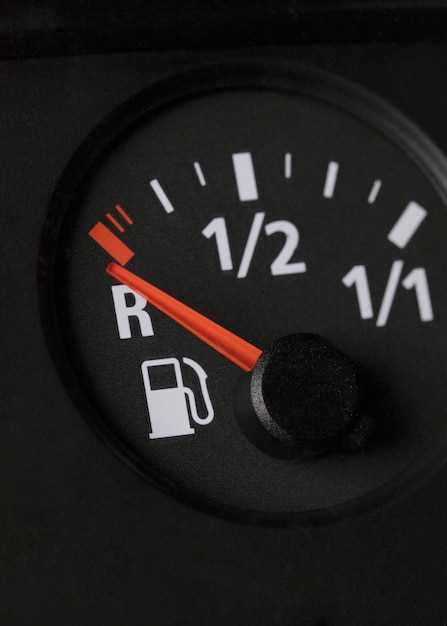
In today’s world, where eco-friendliness and sustainability are increasingly important, maximizing your vehicle’s fuel economy is not just beneficial for your wallet but also for the environment. By adopting specific driving habits and maintenance practices, you can significantly reduce fuel consumption, ultimately leading to a greener future.
Understanding how driving style influences fuel efficiency is essential. Aggressive driving, characterized by rapid acceleration and hard braking, can drastically decrease fuel economy. Instead, cultivating gentle driving habits such as smooth acceleration and maintaining a steady speed can enhance your vehicle’s performance while conserving fuel.
Additionally, regular maintenance plays a critical role in optimizing fuel efficiency. Ensuring that your tires are properly inflated, and your engine is well-tuned can result in substantial gains in how many miles per gallon you achieve. By incorporating these practices into your routine, you can contribute to a more eco-friendly driving experience.
Maintaining Tire Pressure for Better Mileage

Proper tire pressure is crucial for maximizing your vehicle’s fuel economy. Under-inflated tires create increased rolling resistance, which means your engine has to work harder to maintain speed, leading to higher fuel consumption. Conversely, over-inflated tires can reduce the contact area with the road, negatively impacting traction and overall safety. Regularly checking and maintaining the recommended tire pressure can significantly enhance your vehicle’s eco-friendliness and fuel efficiency.
To ensure optimal tire pressure, consult your vehicle’s owner manual or the sticker found on the driver’s side door jamb. These sources provide the manufacturer’s recommended pressure levels. It’s advisable to check tire pressure at least once a month and before long trips, as tires can lose air due to temperature changes and natural air leakage.
In addition to monitoring tire pressure, make a habit of inspecting tires for signs of wear and alignment issues. Properly aligned and balanced tires not only improve mileage but also extend the life of your tires, leading to further savings. Combining regular tire maintenance with attentive pressure management creates a more efficient driving experience, ultimately supporting a greener environment.
Adopting Smooth Acceleration and Braking Habits
One of the most effective ways to improve your vehicle’s fuel economy is by adopting smooth acceleration and braking habits. By making slight adjustments to your driving style, you can reduce fuel consumption and enhance the eco-friendliness of your driving experience.
- Avoid Sudden Accelerations: Gradually press the gas pedal instead of flooring it. This gentle approach minimizes fuel consumption and leads to more efficient driving.
- Maintain Steady Speeds: Use cruise control on highways to keep your speed constant. This helps in avoiding fluctuations that can lead to higher fuel use.
- Plan Your Stops: Anticipate traffic signals and slow down gradually rather than making abrupt stops. Engaging in coasting can save fuel as well.
- Minimize Idling: Turn off the engine if you expect to be stopped for more than a minute. Idling consumes fuel without moving the vehicle.
By implementing these practices, you not only improve your fuel efficiency but also contribute positively to the environment. Smooth driving habits lead to less wear and tear on your vehicle and promote safer road conditions.
- Practice makes perfect; keep applying these methods consistently.
- Monitor your fuel consumption to see improvements over time.
- Consider joining a defensive driving course for additional tips on eco-friendly driving.
Incorporating smooth acceleration and braking habits into your driving techniques is an easy and effective way to enhance your vehicle’s fuel economy while promoting eco-responsibility.
Planning Routes to Avoid Unnecessary Idling

Effective route planning is essential for maximizing your vehicle’s fuel economy and minimizing driving-related emissions. By strategically choosing your paths, you can avoid situations that lead to unnecessary idling, which consumes fuel without contributing to your progress.
Start by utilizing navigation apps that provide real-time traffic updates. These tools can help you avoid congested areas where idling is likely, ensuring that your driving remains efficient. Many applications offer alternative routes that reduce wait times at traffic lights and intersections.
Consider the time of day when planning your trips. Peak traffic hours can significantly increase the amount of time spent idling. If possible, schedule your driving during off-peak hours to enhance overall performance and fuel savings.
Incorporating multiple stops into a single trip can also reduce the need for frequent idling. Plan your errands sequentially to minimize backtracking, allowing for smoother transitions between locations. This not only saves fuel but also promotes a more eco-friendly driving style.
Lastly, familiarize yourself with your local area’s traffic patterns. Some routes may consistently have fewer congestion issues, providing a reliable means to maintain steady driving speeds which is crucial for optimal fuel economy. By planning your routes with these considerations in mind, you can significantly improve efficiency and reduce environmental impact.






